BY CMDE RANJIT B RAI (RETD)
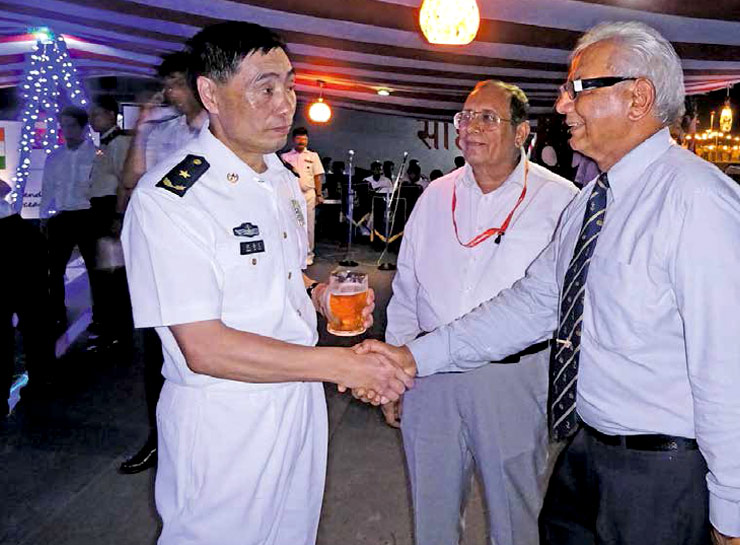
INDIA’S PENINSULA juts in to the Indian Ocean like a sword, in to the confluence of the waters that lead to the icy Antartica from the Bay of Bengal and the Arabian Sea from the West. The Indian Ocean Region (IOR) extends from the Suez Canal to Aden in Yemen and East Coast of Africa an area of piracy, to South East Asia’s strategic waterways of Malacca Straits, with Indonesia in the East, and Australia in the South East.
The entrances to the Indian Ocean Region are the six choke narrows, of Bab-el- Mandab, Hormuz, Malacca and Sunda Straits and the Cape of Good Hope of South Africa, and India has the Ten Degree Channel in the Andaman and Nicobars. If any of these narrows is blocked for shipping it can lead to disruption of world trade, as 70% of the world’s oil and cargo trade passes through this region’s waters, at a time when India, ASEAN and China are the world’s fastest growing economies, and are also contributing to drive the world’s flagging economy. The strangulation of shipping lanes could even lead to war, and nation’s militaries in the East are preparing for just that, as insurance, and Indian Ocean is witnessing militarisation. Nations like Bangla Desh, Indonesia and Vietnam are buying submarines and China is building eight for Pakistan in a long term plan. China is also helping Pakistan to build PNS Jinnah at Ormara as a submarine base.
The Indian Ocean Region is also the world’s most populous region with pockets of poverty, and has become strategically, the world’s most important region where terrorism rages in South Asian nations and where India’s and ambitious China’s maritime interests clash. The Chinese economy has expanded sixty two times, from less than $200 billion to approximately $11 trillion between 1979 and 2016 and China is the world’s largest exporting nation, the world’s largest trading nation and wishes to overtake the United States, but China is also vulnerable in the IOR. China is the world’s largest importer of fossil fuels which transits through the Indian Ocean region, at times at the mercy of India and USA which has a base in Diego Garcia. This worries China.
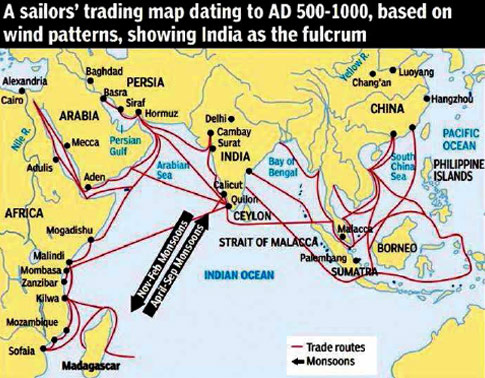 Historically nation’s have grown and risen on the world’s stage on maritime power and nationalism. China dubs its nationalism as ‘Love For Your Country’, (在您的国家 Pinyin Feibao) and are fired by a desire to regain their lost ‘Yellow Glory’, in a “peaceful harmonious rise’, which the world views as a ruse. China has wowed never to be dominated as it was for 100 years (1849-1949) by foreign powers and lost Hong Kong and Taiwan and wants to regain its traditional boundaries.
Historically nation’s have grown and risen on the world’s stage on maritime power and nationalism. China dubs its nationalism as ‘Love For Your Country’, (在您的国家 Pinyin Feibao) and are fired by a desire to regain their lost ‘Yellow Glory’, in a “peaceful harmonious rise’, which the world views as a ruse. China has wowed never to be dominated as it was for 100 years (1849-1949) by foreign powers and lost Hong Kong and Taiwan and wants to regain its traditional boundaries.
China has placed its bets on its strategy based on its board game called ‘Weiqi’ pronounced ‘weychee’ (igo in Japanese, baduk in Korean) with a ‘String of Pearls’ of ports to contain India in the Indian Ocean as it seeks a place in the security architecture of the IOR for security of its shipping. China has interests in Myanmar and has built the Kyauk Pyu port for $10 billion which received its first supertanker carrying 140,000 tonnes of Chinese-bound crude oil in June, the entry point for a pipeline that pumps oil 770 km (480 miles) across Myanmar to South West China and forms a crucial part of Beijing’s “Belt and Road” project to deepen its economic links with Asia and beyond.
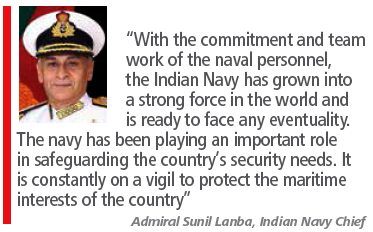 China has built Gwadar port, has taken lease of Humbantota in Sri Lanka and now controls Gwadar in Pakistan and has an expanding naval base in Djibouti. The PLA (Navy) has shown its capacity for expeditionary forays by continuously fielding an anti-piracy Naval Task Force off the Horn of Africa from 2006, and even carried out successful evacuations from the Mediterranean, and sailed in nuclear and conventional submarines for patrols in to the IOR.
China has built Gwadar port, has taken lease of Humbantota in Sri Lanka and now controls Gwadar in Pakistan and has an expanding naval base in Djibouti. The PLA (Navy) has shown its capacity for expeditionary forays by continuously fielding an anti-piracy Naval Task Force off the Horn of Africa from 2006, and even carried out successful evacuations from the Mediterranean, and sailed in nuclear and conventional submarines for patrols in to the IOR.
Hence the challenges for India as the predominant military power in the IOR are daunting in its backyard, and is hard pressed to keep China’s influence out, which uses money power to eke Tribute from poorer nations, a Chinese trait to use cheque book diplomacy. On 13th May, 2013 Prime Minister Dr Manmohan Singh while laying the foundation stone of the National Defence University (NDU) in Gurgaon declared that India has taken on the responsibility to be the net security in the Indian Ocean Region apparently to provide assurances to the smaller nations. It was propelled by USA’s ‘Pivot in the East’, and the need to contribute as it was towards China.
This security provider role is a big responsibility and is the predominant challenge thrust on India’s small but growing 65,000 strong Navy with one aircraft carrier, 133 ships and over 250 aircraft, helicopters and UAVs. The Navy has thirty six ships and six Scorpene submarines on order, but its future ambitious expansion plan has been held in abeyance. India’s expanding Coast Guard (ICG) has 42 Patrol ships, 60 Patrol boats and many smaller vessels and 58 aircraft and helicopters to assist in the Constabulary and Search and Rescue role (SAR see Map) in the IOR. Both arms are proficient but no match in size for the platforms needed for the IOR. India has also gifted platforms to Seychelles and is developing an area on Assumption island, Mauritius has Indian Naval personnel stationed and Sri Lanka maintains close relations. Maldives tends to favour China.
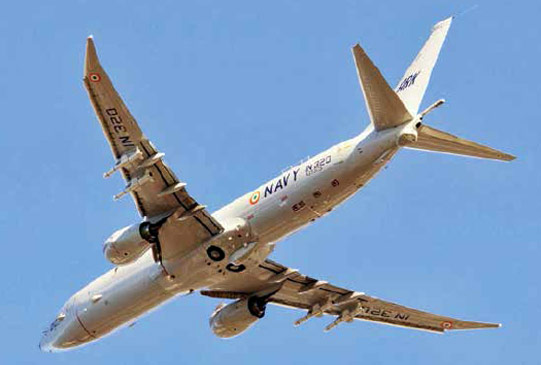
On 25th January, 2015 President Barack Obama was in India for India’s Republic Day as Chief Guest and Prime Minister Narendra Modi agreed with Obama on a US-India Joint Strategic Vision for the Asia-Pacific and Indian Ocean Region, which has fostered a closer partnership between the United States and India as indispensable, to promote peace, prosperity and stability in the region in the agreement. Military relations and $ 12 bill worth of imports of military hardware from USA includes twelve P-8I Boeing 737 latest Maritime Reconnaissance (MR) planes bristling with electronics and Mk 48 torpedoes and Harpoons Mk L84 Block 2 to track ships for Maritime Defence Awareness (MDA), especially PLA(Navy) submarines sneaking into the IOR. Import of twenty four latest long range Guardian Unmanned Aerial Vehicles (UAV Drones) is also on the cards as economical and 24×7 MR platforms which the Indian Navy will operate. They can also be armed.
India and the United States are important drivers of regional and global growth so India has trucked with USA to build a Defence and Support Partnership for inclusive development, and increased regional connectivity by collaborating with other interested partners to address poverty and support broad-based prosperity. The 21st edition of the two week Exercise Malabar with US Navy and Japan’s Maritime Self Defence, was hosted by the Indian Navy’s Eastern Naval Command in the Bay of Bengal in July 2017. It saw participation of thirteen ships and two submarines and the 103,000 ton USS Nimitz, the world’s largest aircraft carrier and F-18s flew alongside INS Vikramaditya’s MiG-29Ks. It was the most advanced US, Japan and Indian Tri Nation maritime exercise so far, as it had all the components of a powerful Naval Task Force in sub surface, surface and under water warfare operating jointly, with rotational commands as Officers in Tactical Command (OTCs).
China has responded with the Maritime Silk Route ((MSR) and had already signed a programme to build and develop Gwadar port and other projects in Pakistan and link it to China’s hinterland with the China Pakistan Economic Corridor (CPEC) with investments of over $ 50 billion. CPEC passes through India’s Kashmir occupied by Pakistan (POK), and demanded back by India. China has instutionalised its ambitions at its Belt and Road Forum (BFR) in Beijing in September 2017 with its deep pockets. President Xi Jinping announced the next edition of BRF conclave would be in 2019. India and Bhutan abstained from the conference.
Quite a few world’s leading maritime thinkers had foretold the troubled future of the region in the last century. Alfred Thayer Mahan is credited with, “Whoever controls India Ocean Controls Asia. This Ocean is the key to the seven seas. The Future of the world will be decided on its waters”. Nearer home the Oxford educated diplomat Dr KM Panikar in his 20th Century treatise on Indian Ocean predicted, “It is obvious that the Indian Ocean will be one of the major problems of the Future. The security it has enjoyed for over 150 years (1864-1941) has been completely shattered by events of last few years. With major powers developing in the area, America, China, and perhaps Russia will have access to the seas, in a manner totally different from what the Europeans had in the centuries that followed Vasco D’ Gama’s arrival”.
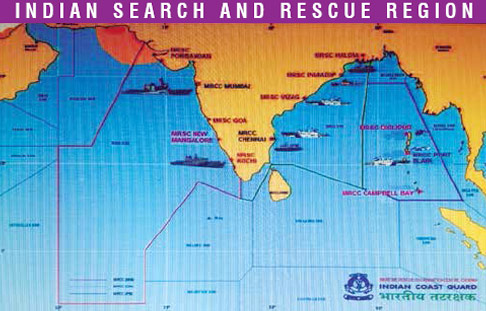
The Greeks define a “thalassocratic” state as a nation with maritime ambitions in the commercial and military spheres, while Khaireddin Barbarosa adviser to the Ottoman Emperor Suleiman the Magnificent (1494 – 1566) said, “He who rules on the seas will shortly rule on the land also”. Those messages have been taken on by the Indian Navy which has issued India’s Military Maritime Strategy (2007) and Doctrine (2009), dockets. The thinker Mackinder’s continental theory for Europe, is giving way to Mahan’s and China has relied on an aggressive Maritime strategy with a large Navy even to dominate its illegal South China sea claims. Mahan’s philosophy of big platforms and submarines and control of trade routes succeeded for America.
Indian Ocean is also prone to disasters like cyclones, earthquakes and Tsunamis and has rich Exclusive Economic Zones in the hands of smaller island states. Compared with India’s 2.3 sq km, Seychelles and Mauritius which have Indian influence have 1.3 sq km each and have combined them for the Blue economy. Maldives where there is Chinese influence has 912,000 sq km and Reunion has 312,000 sq km in the hands of France a riparian state in IOR. These swaths of water need patrolling and even for Piracy, and India assists friendly nations, even nations on the East Coast of Africa like Mozambique.
Hence India as the Net Security Provider has its tasks cut out to defend itself and it has trucked with USA and Japan in the maritime security field in a large way, which irks China. In Humanitarian and Disaster Relief (HADR) Indian Navy proved its mettle in the 2004 Tsunami. The IOR is a much challenged region where the destiny of the world seems to hang and the author quotes K.M. Panikkar, “‘It is a pre-requisite of India’s freedom that she should share in the responsibility of guarding in the Indian Ocean as her interest in this area is predominant.’ Shan No Varuna.
– Cmde Ranjit B Rai (Retd ) is former Director of Naval Intelligence and Operations and author of Navy Diary -2018








